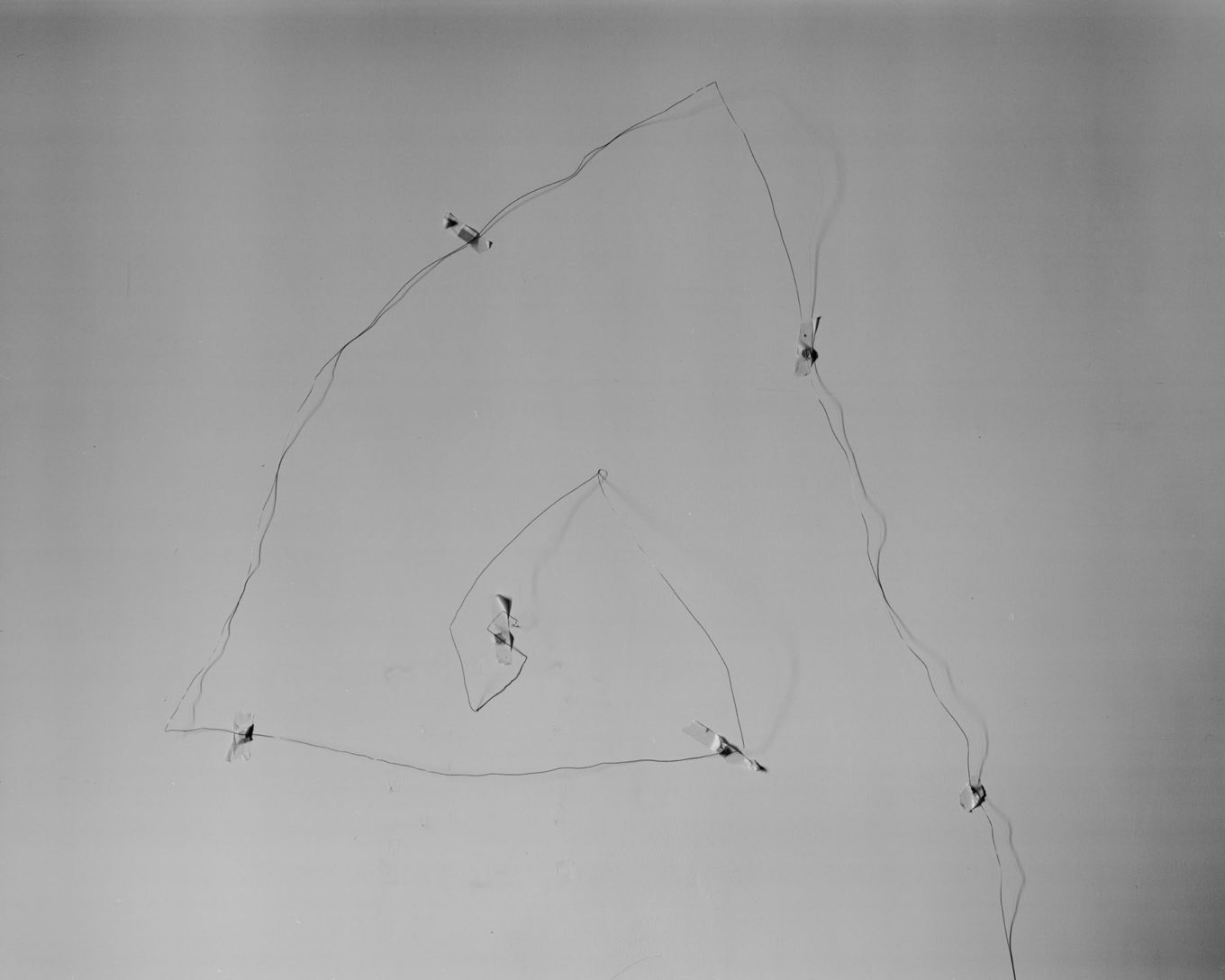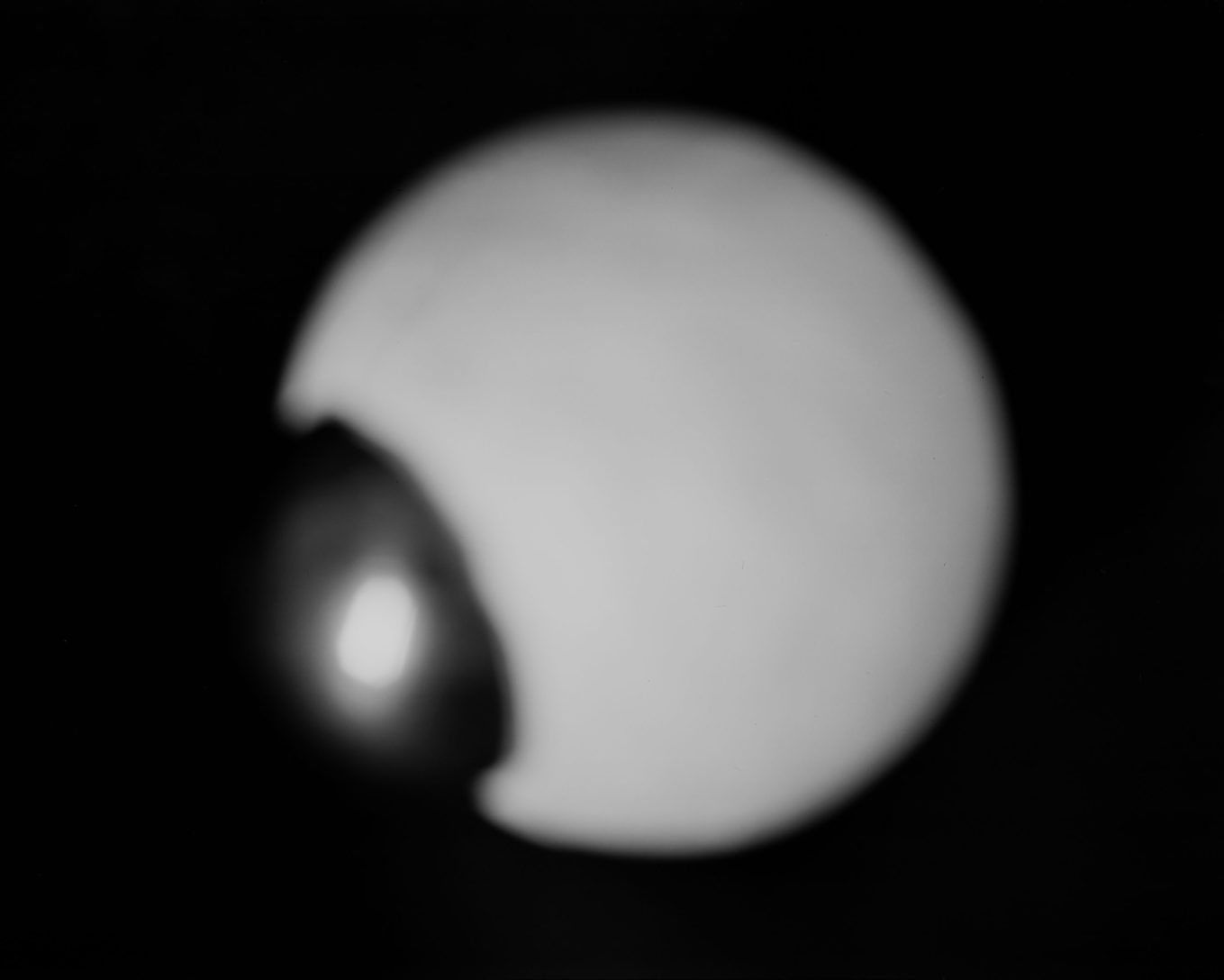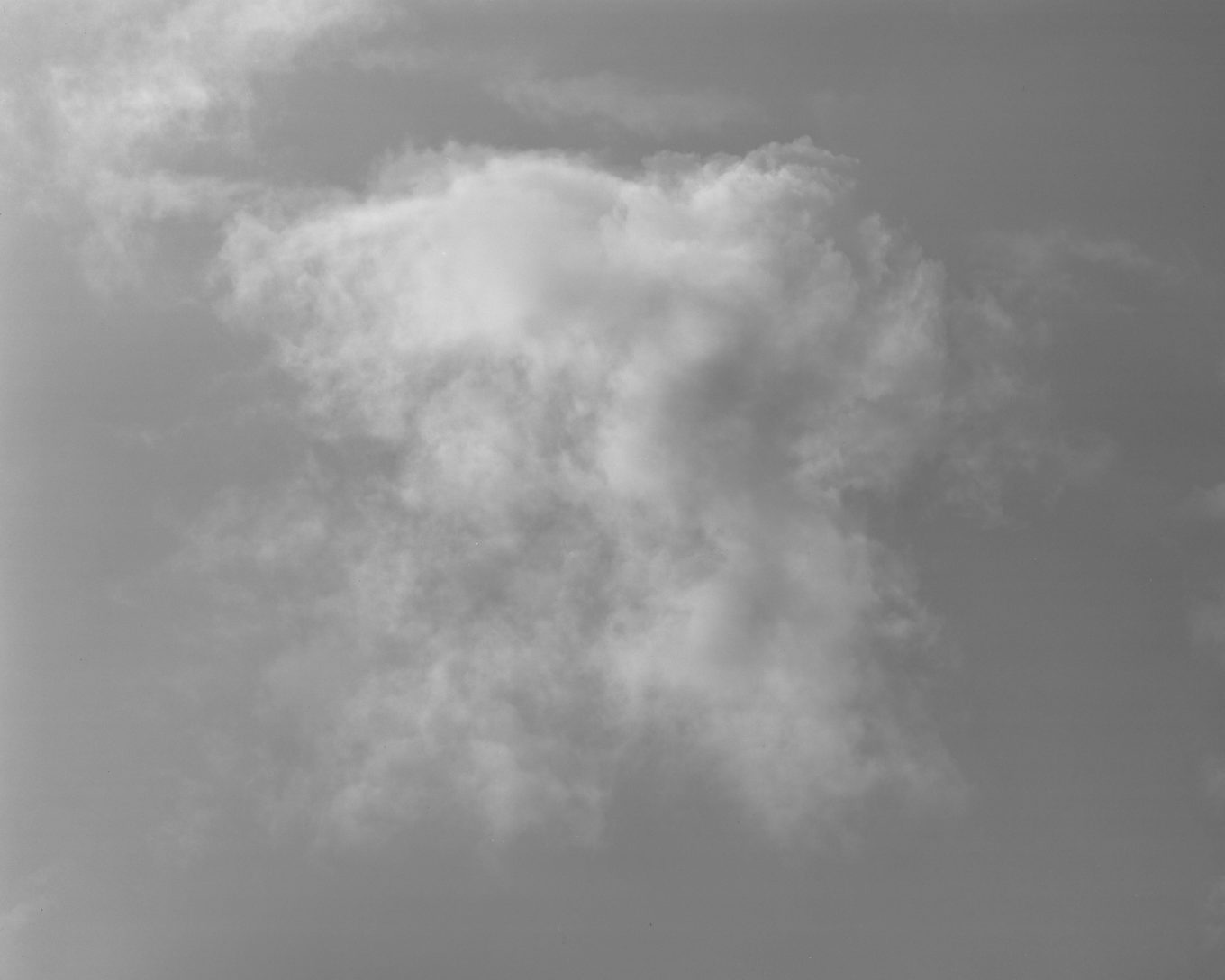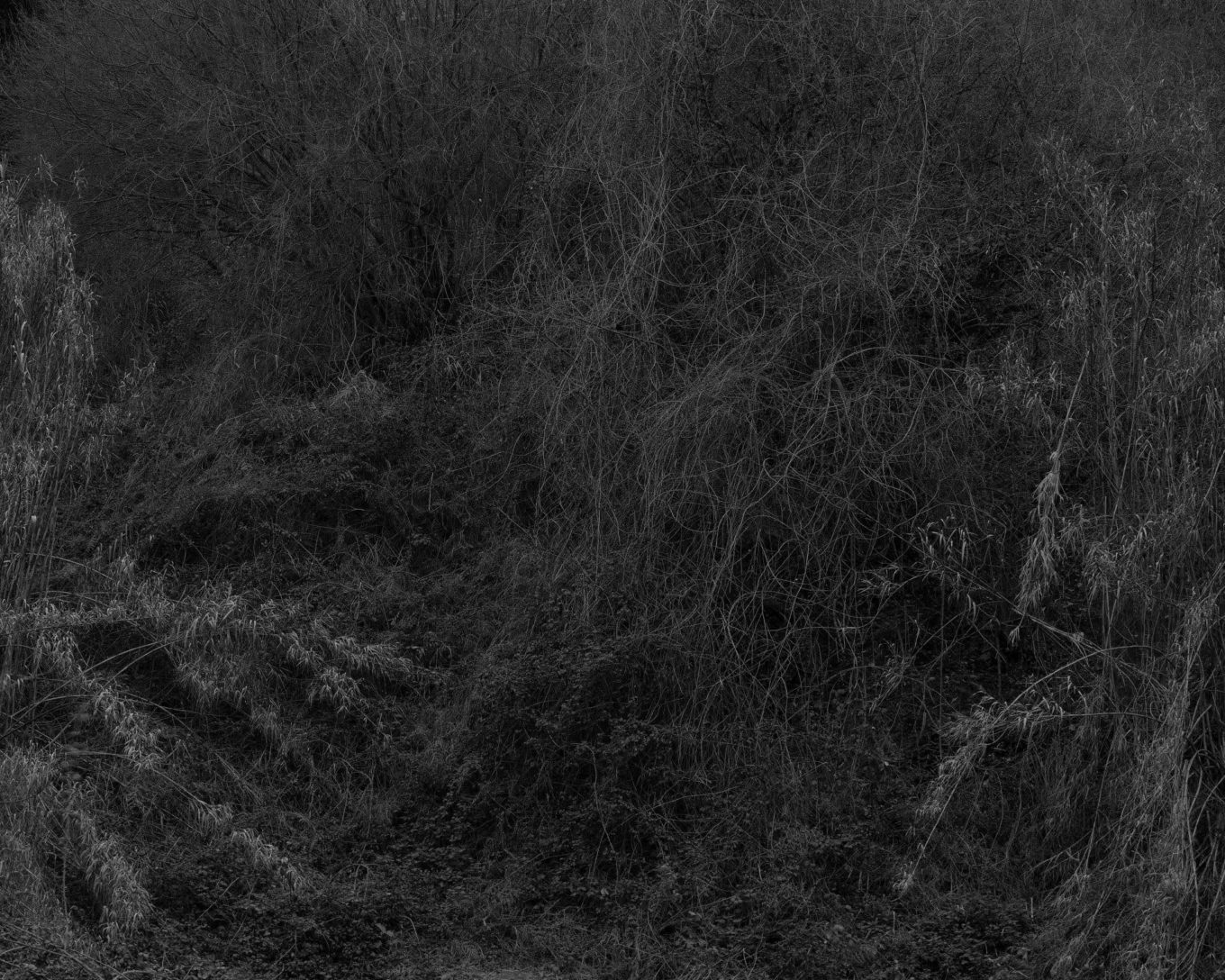Fabio Barile, photographer
Works for a cosmic feeling
Works for a cosmic feeling is a collection of photographic works shot with a film large format camera that employing the tools of science and philosophy explores what Romain Rolland (in a 1927 letter to Sigmund Freud) called “an oceanic feeling” – referring to the sensation of being at one with the universe. Whether observing the way in which the branches and leaves of a forest organize themselves, how a bi-dimensional surface bursts into the third dimension or the attempts to recreate animal made structures, the works are endeavors to examine, connect with, and indeed depict, a different level of reality – within the limitations of the photographic medium. Following the Taoist concept of the “valley spirit,” embracing all the waters that flow within, the works in their whole acts as a stream of consciousness and an immersive voyage into the concepts of becoming and that of interconnectivity, adhering to the notion that everything is greater than the sum of its parts – cornerstone of the Theory of Complexity. The works explore multiple trajectories in an attempt to behave as a complex system. The images can either be treated as single autonomous works, or viewed as entangled in an oceanic net. What’s more, the transformative process of development forms an integral part of the work itself.
How do we come to think of things, rather than of processes in this absolute flux? By shutting our eyes to the successive events. It is an artificial attitude that makes sections in the stream of change, and calls them things […] When we shall know the truth of things, we shall realize how absurd it is for us to worship isolated products of the incessant series of transformations as though they were eternal and real. Life is no thing or state of a thing, but a continuous movement or change.
From: S. Radhakrishnan quoted in The Tao of Physics, An Exploration of the Parallels Between Modern Physics ad Eastern Mysticism by Frifjof Capra.
On which fields of knowledge are you focused?
Arts and science.
What is the object of your research?
Complexity and evolution of things, and maybe something else.
Could you identify some constants in your work?
Mainly the passion for science, with a system of reference in the history of photography and ramifications in other fields like the creativity in the animal kingdom and personal life.
How did you find out about Aby Warburg’s work?
I found out about Warburg thanks to my wife. The most interesting things in his work is the research through time of the origin of the visual language and the similarity between the transmission the visual informations to the biological transmission of information. I find fascinating how in the visual and spoken languages, information and shape can migrate and be transformed under the influence of the new environment and context. In biology we observe lot of similarity, organisms when migrate their offspring have to develop under new influences and need to evolve, shape and function then will change step by step in order do adapt to the new circumstances. An example can be the Swastika, a symbol of divinity and spirituality in Hinduism, Buddhism and Jainism, now viewed as a symbol of racial supremacism. A similitude in biology can be the development of the feather, which developed as a thermoregulatory tool and then have enabled the development of flight, a process called Exaptation.
How would you define an Atlas?
For me an atlas is a system of internal references that through connections can represent things outside the system itself.
Atlas as a conceptual, formal and mnemonic device; do you use it in your work?
I use the concept of atlas as the representation of the relationship between the inner world and the world outside and how the two build each other. This “Atlas of who I Am” is shaped by my interest in the history of life, the evolution of cultures, the history of photography, the history of science, personal life and other fields. In my perception, these things even distant from each other are all intertwined and form a basin of references from which I pick things to build my mental map of the universe of things.
Do you know about the existence of Mnemotechnics?
Yes
Which mnemonic system guides the organization of your material?
None, the organization is free and in continuous state of change.
Are there visual and emotional formulas (pathosformeln) in your project?
My work relies on the evolutionary concept of exaptation, in my work, objects needed to build a tool/image then are reused to build another one, so is for the use of references in the history of photography as iconic tool that shift in significance. An example is the image: Model of helium hydride molecule, the first type of molecule to ever form in the early universe. The object I have built to represent the molecule has been then reused in the image: Laser Harmonograph pendulum n°1 as a weight.
That same image, Model of helium hydride molecule, the first type of molecule to ever form in the early universe has been shot out of focus taking inspiration from Hiroshi Sugimoto’s work on architecture, his aim being to evoke the idea of an architecture rather than the reproduction of a building. I used the same technique, but for a different signification, that is to evoke the idea of looking at something impalpable, really small and remote in time.
In your work, do you identify formal or conceptual recurrences such as repetitions and disruption,distance and proximity, identity and migration, conflict and colonization?
Due to the nature of my work, I tend to identify few things and leave the unspoken to be identified later, but since you asked….. I think the themes of distance /proximity and repetitions / disruption might be both applicable almost as if they were the same things. Disruption and distance could be said near to the concept of incoherence, which I think is integral part of my work since it is an attempt to explore the multiplicity of the aspects my life and interests, I try to work on things that don’t go along, like order and chaos, universal and personal, known and unknown. Between these themes there is distance and disruption of linearity, but on the other hand some of them are two aspects of the same things so they face different aspect of reality but they are embedded one in the other like a Janus bifrons, here comes the proximity, that comes also due to the fact that all the works gravitates around me.
In your work, what is the balance between image and text?
Images and text live in their reciprocal existence, they form a system, similar to the relationship between conscious (text) and unconscious (images).
Thinking about Warburg’s ‘good neighborhood rule’, what are the books that underpin your project?
The Tao of Physics – Fritjof Capra
Imperfezione – Telmo Pievani
Chaos – James Gleick
The strange order of things – Antonio Damasio
The Systems View of Life – Fritjof Capra and Pier Luigi Luisi
Fabio Barile was born in Italy in 1980, graduating from FSM in Florence with a degree in photography in 2007. He started his photographic research in 2005 with a project about coastal erosion, which affects 1500 km of Italian coastline. The resulting project, Among, aimed to investigate the relationship between the natural processes of the landscape and the impact of humanity upon it. Over the last few years Barile’s work has been driven by an interest in science in relation to art – with both conceived as tools for better understanding reality. His most recent long-term project, “An Investigation of the Laws Observable in the Composition, Dissolution and Restoration of Land,” examines the manner in which geomorphology acts upon the land, serving as testimony to the vastness of geological time. The work employs photography to stimulate a deeper understanding of the landscape and our connection with the natural environment. “At first glance, Fabio Barile’s practice could be said to follow in the long tradition of Italian landscape photography which includes practitioners such as Luigi Ghirri, Guido Guidi. On closer inspection, however, the images in An Investigation hew to a tight conceptual framework that belie their simplicity, asking deeper questions about the nature of Time, and geologic time questions whose philosophical implications underpin scientific endeavor, human perception, and the unknowable forces of creative destruction at work in Nature” (Naomi Itami)




